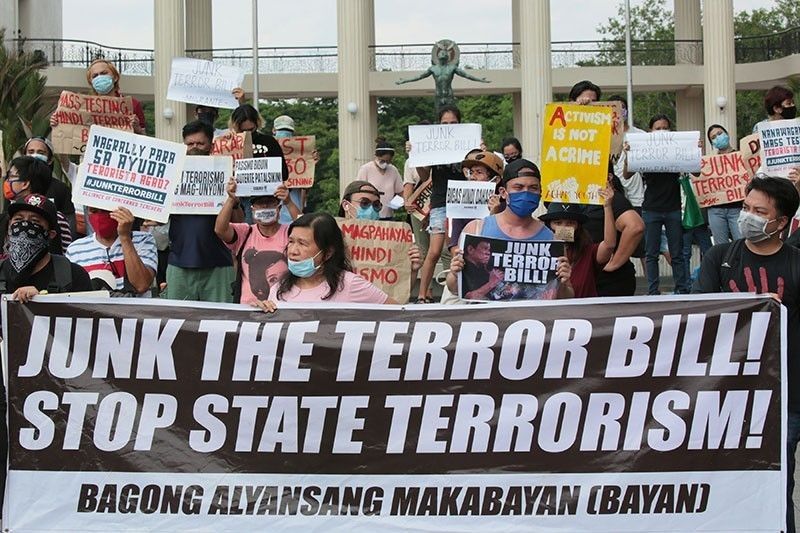What prompted the signing of the UP-DND accord in 1989?

MANILA, Philippines (Updated 2:17 p.m.) — In a move seen to shrink spaces for activists and for dissent, Defense Secretary Delfin Lorenzana has unilaterally terminated the decades-long accord with the University of the Philippines that bars state forces from entering campuses without coordination with school officials.
Lorenzana, in a letter to UP President Danilo Concepcion, said the UP-DND accord is terminated since January 15, a move that the UP official said on Tuesday was done without consultation.
In justifying the unilateral termination, the defense chief had again used unsubstantiated accusations that there is an “ongoing clandestine recruitment” inside UP campuses and the deal is being used to bar the government from holding operations in the schools.
The accord was signed in 1989 between then UP President Jose Abueva and defense chief Fidel Ramos and also holds that military and police cannot enter any UP campus "except in cases of hot pursuit and similar occasions of emergency" or when assistance is requested by university officials.
An earlier agreement, the 1982 Soto-Enrile accord between student leader Sonia Soto and then Defense Minister Juan Ponce Enrile, was signed to protect the autonomy of the university from military intervention, especially in protests.
"Sa UP mayroon silang ala-Demilitarized Zone (DMZ). Military can’t enter without coordination," Lorenzana said on Twitter on Tuesday in response to the outcry against his decision.
"What makes UP so special? Nasa Korean border ba kayo? CLOY is life na ba? We are not your enemies. We are here to protect our people, especially our youth."
In 1989: Staffer abducted from campus, tortured
UP Journalism professor Danilo Arao in a tweet explained that the Soto-Enrile accord was updated in 1989. “It essentially disallows military and police presence on campus,” he added.
Arao also recalled the incident that prompted the signing of the UP-DND accord. “As a news writer of the Philippine Collegian, I remember the abduction of our staff Donato Continente on the night of June 16 at Vinzons Hall. He was tortured and forced to confess to the killing of Col. James Rowe,” he said.
1989=2021: The signing of the UP-DND accord is meant to stop the military and police from abducting UP constituents like Donato Continente who was then our staff at the Philippine Collegian. To terminate the accord is to legalize the deplorable.
— Danilo Arao (@dannyarao) January 18, 2021
The UP professor was also quoted in a Kodao report as saying that their colleague’s abduction was “frightening” and they were worried for Continente since “extrajudicial [killing] was rampant then.”
Activist Renato Reyes Jr. in a series of tweets, also recounted Continente’s case. He said in Filipino: “The violent abduction and arrest of [Continente] in UP campus resulted in discussion on conduct of police and military operations.”
He continued: “These kinds of operation and violation are threats to UP’s academic freedom.
Bakit nga ba may UP-DND Accord? Noong June 16, 1989 ay naganap ang isang military operation sa UP Diliman Campus na nagresulta sa pagdukot at pag-aresto kay Donato Continente sa Vinzons Hall. Si Donat ay staff the Philippine Collegian. #DefendUP (cont)
— Renato Reyes, Jr. (@natoreyes) January 19, 2021
Fourteen years later, Continente walked free in 2005 as maintained his innocence.
In a STAR report, he was quoted as saying as he stepped out of the New Bilibid Prison: “I’m innocent. I was a victim of abduction and torture, forced to admit to a crime I did not commit.
During the Duterte administration: UP as safe space
While President Rodrigo Duterte placed all of Luzon under lockdown since March 2020 and protesters faced threats of arrest for holding “mass gatherings” ,UP became a safe venue for protests.
Progressive groups and the youth filled the streets of UP at least three times in 2020: On June 12, for an Independence Day rally in what they called as a Grand “mañanita” protest. Protests were again held in the campus to denounce the signing of the Anti-Terrorism Act of 2020 and to stage the “SONAgkaisa” protest action on July 27, as Duterte delivered his penultimate State of the Nation Address in Batasan, Quezon City.
UP was also home to Lakbayan ng Pambansang Minorya, last held in 2017, that aims to bring attention to indigenous peoples’ issues—but even this event was characterized by the National Intelligence Coordinating Agency as a scheme by "communist-terrorist groups" to recruit underage "so-called lumads" to take up arms against the government.
By November, UP had become targeted by red-tagging, with no less than President Rodrigo Duterte threatening to defund the university over students at Ateneo de Manila holding a strike to hold the government accountable for its disaster response.
The president said then: “I will stop the funding. You do not do anything except recruit communists there anyway.” UP flatly denied this accusation.
READ: UP Diliman pushes back vs red-tagging, vows to uphold critical thinking, academic freedom | Tagged again for 'recruiting communists', UP explains what it actually does
The arrest of the 'Cebu 8'
Even with the UP-DND accord in effect last year, police arrested seven activists — and a bystander who was documenting the mass action—who ran into the UP Cebu premises to get away from the law enforcers.
The police filed complaints of violation of Republic Act 11332, or the Mandatory Reporting of Notifiable Diseases by holding a “mass gathering.” The charge has been used against activists during the quarantine, although it is unclear whether police have been using it correctly.
Charges and complaints against activists whom police claimed violated RA 11332 have been dismissed or dropped.
In a statement on June 18, 2020, the National Union of Peoples’ Laywers-Cebu Chapter said the police officers “breached into the UP grounds without prior consent or coordination with the UP Cebu Administration, contrary to the binding agreement between the UP and the DND.”
The case against the Cebu 8 was dismissed on Sept. 8, 2020.
READ: Lawyers of 'Cebu 8' to sue cops who arrested protesters | With raps against them junked, activists to sue Manila cops over Pride march arrests
UP professor Arao noted that even with the accord, the Armed Forces of the Philippines and the Philippine National Police conducted surveillance and even arrests as seen in the case of Cebu 8.
“These would worsen with the accord’s unilateral termination,” he added.
With accord scrapped, what can cops and troops do?
NUPL president Edre Olalia noted that police and military personnel had been “lurking inside the campus for the longest time” despite the supposed need to coordinate with UP authorities.
He said, however, that the termination of the UP-DND accord will definitely affect how UP is as a safe space for protest actions.
As UP officials need not be informed before state forces enter the campus, “will uniformed security now go in and out without safeguards and oversight?,” Olalia told Philstar.com.
Olalia added: “Will they now install CCTVs in every street corner inside campus? Will they set up checkpoints as they please? Will they sit in uninvited in lectures, fora, symposia and colloquia?”
He cautioned that state forces might now watch students all the time and even enter their dormintories and “tambayans,” or spaces in the campus where organizations meet.
“Will they stay at libraries and watch over students to check if they are reading 'subversive' materials? Will they check out what statement shirts or caps students, faculty and non-academic personnel are wearing?” he said.
"Despite rhetorical disclaimers, in reality: Will they now disperse legitimate protests and search and arrest peaceful demonstrators under different reasons and guises? So aside from UP and [Commission on Human Rights], where can the people protest freely at this time and circumstances?"
- Latest
- Trending



























